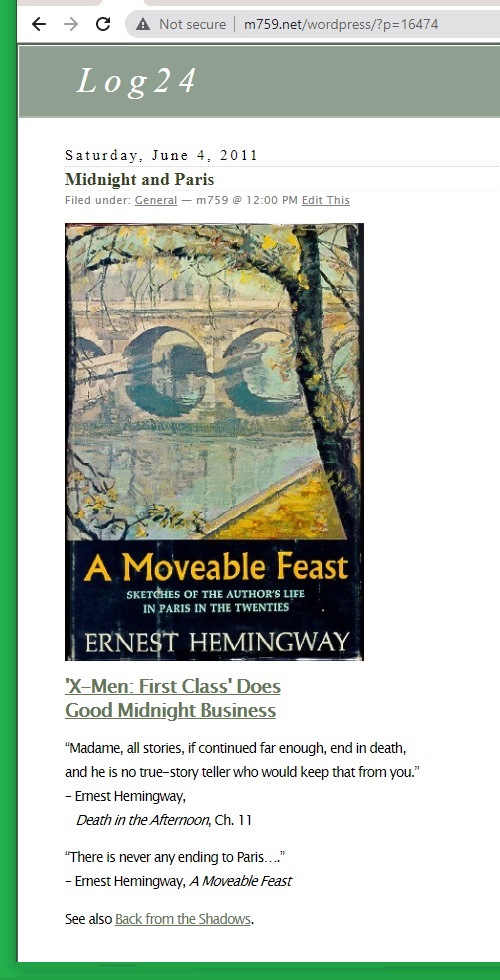Friday, August 20, 2021
"Consider the six-dimensional vector space ( 𝔽2 )6
over the two-element field 𝔽2 ."
— Page 23 of "The Universal Kummer Threefold,"
arXiv:1208.1229v3, 12 June 2013, by Qingchun Ren,
Steven V. Sam, Gus Schrader, and Bernd Sturmfels.
An illustration of that space from 1981 —

The above recollection of the Kummer Threefold remark was suggested by
recent posts now tagged Smallfield . . .
|

"Third Man – an elderly American railway bum,
a schizophrenic, speaks with a Southern drawl"
"Art to which I fix my celebrated signature."
— "Third Man" in Victor Snaith's play "Changing Stations"

|
If we read the above "art" as a scythe blade to which the "signature" —
Snaith ("the crooked handle or shaft of a scythe") — is attached,
an image of the late art critic Robert Hughes comes to mind:

That image of Hughes appeared here in a post of June 17, 2015 —
"Slow Art, Continued" — that also referenced the Kummer Threefold
paper above.
Comments Off on Space Note

For more on the phrase "diamond brackets," see the post
Artistic Style of July 24, 2018.
This was the dies natalis (in the Catholic sense) of philosophy
professor Garth L. Kemerling.
From Kemerling's internet "Philosophy Pages" —
"First, it must be possible in principle to arrange and organize
the chaos of our many individual sensory images by tracing
the connections that hold among them. This Kant called
the synthetic unity of the sensory manifold.
Second, it must be possible in principle for a single subject
to perform this organization by discovering the connections
among perceived images. This is satisfied by what Kant called
the transcendental unity of apperception."
Related Log24 phrases —
"Intake Manifold" and "Bulk Apperception."
* See also Bracketing (phenomenology) in Wikipedia.
Comments Off on Diamond Brackets*
Comments Off on Symbols and Mysteries
“Character and action, you brought together” —
Keanu Reeves to the late Sonny Chiba.

Comments Off on Japanese Steel
Thursday, August 19, 2021
(A sequel to this morning's post A Subtle Knife for Sean.)
Exhibit A —
Einstein in The Saturday Review, 1949 —
"In any case it was quite sufficient for me
if I could peg proofs upon propositions
the validity of which did not seem to me to be dubious.
For example, I remember that an uncle told me
the Pythagorean theorem before the holy geometry booklet
had come into my hands. After much effort I succeeded
in 'proving' this theorem on the basis of the similarity
of triangles; in doing so it seemed to me 'evident' that
the relations of the sides of the right-angled triangles
would have to be completely determined by one of the
acute angles. Only something which did not in similar fashion
seem to be 'evident' appeared to me to be in need of any proof
at all. Also, the objects with which geometry deals seemed to
be of no different type than the objects of sensory perception,
'which can be seen and touched.' This primitive idea, which
probably also lies at the bottom of the well-known Kantian
problematic concerning the possibility of 'synthetic judgments
a priori' rests obviously upon the fact that the relation of
geometrical concepts to objects of direct experience
(rigid rod, finite interval, etc.) was unconsciously present."
Exhibit B —
Strogatz in The New Yorker, 2015 —
"Einstein, unfortunately, left no … record of his childhood proof.
In his Saturday Review essay, he described it in general terms,
mentioning only that it relied on 'the similarity of triangles.'
The consensus among Einstein’s biographers is that he probably
discovered, on his own, a standard textbook proof in which similar
triangles (meaning triangles that are like photographic reductions
or enlargements of one another) do indeed play a starring role.
Walter Isaacson, Jeremy Bernstein, and Banesh Hoffman all come
to this deflating conclusion, and each of them describes the steps
that Einstein would have followed as he unwittingly reinvented
a well-known proof."
Exhibit C —
Schroeder in a book, 1991 —

Schroeder presents an elegant and memorable proof. He attributes
the proof to Einstein, citing purely hearsay evidence in a footnote.
The only other evidence for Einstein's connection with the proof
is his 1949 Saturday Review remarks. If Einstein did come up with
the proof at age 11 and discuss it with others later, as Schroeder
claims, it seems he might have felt a certain pride and been more
specific in 1949, instead of merely mentioning the theorem in passing
before he discussed Kantian philosophy relating concepts to objects.
Strogatz says that . . .
"What we’re seeing here is a quintessential use of
a symmetry argument… scaling….
Throughout his career, Einstein would continue to
deploy symmetry arguments like a scalpel, getting to
the hidden heart of things."
Connoisseurs of bullshit may prefer a faux-Chinese approach to
"the hidden heart of things." See Log24 on August 16, 2021 —
http://m759.net/wordpress/?p=96023 —
In a Nutshell: The Core of Everything .
Comments Off on A Scalpel for Einstein
"The subject of K -theory takes its name from a 1957 construction of
Alexander Grothendieck which appeared in the
Grothendieck–Riemann–Roch theorem, his generalization of
Hirzebruch's theorem.[2] Let X be a smooth algebraic variety.
To each vector bundle on X , Grothendieck associates an invariant, its class .
The set of all classes on X was called K(X) from the German Klasse ."
— Wikipedia, Algebraic K -theory
In memory of a mathematician who reportedly died on July 3rd, 2021 —

For a somewhat simpler K , see Aesthetic Distance.
Comments Off on Klasse
From yesterday morning's post "What's in a Name?" —
|

"Third Man – an elderly American railway bum,
a schizophrenic, speaks with a Southern drawl"
"Art to which I fix my celebrated signature."
— "Third Man" in Victor Snaith's play "Changing Stations"
|

In the above Facebook post, a dead person speaks —
"You and I are separated by a thin piece of silk
which neither the strongest man could tear,
nor the sharpest tool could pierce.
Nothing can cross this membrane that divides us
except art, music, poetry and love."

Try a subtle knife, Sean.

Related material —

Comments Off on A Subtle Knife for Sean
Wednesday, August 18, 2021
Comments Off on Art’s Bedfellows


"Third Man – an elderly American railway bum,
a schizophrenic, speaks with a Southern drawl"
"Art to which I fix my celebrated signature."
— "Third Man" in Victor Snaith's play "Changing Stations"

"Snaithing may thus be Smallfield . . . ."
Comments Off on What’s in a Name?

Starring J. J. Abrams as Leonhard Euler?

Related material —
The Cornell cap in the recent HBO "White Lotus" —

"I'm just playing the hand I was dealt."

Comments Off on Eight the Great
Tuesday, August 17, 2021

From Under the Volcano , Chapter II—
Hotel Bella Vista
Gran Baile Noviembre 1938
a Beneficio de la Cruz Roja.
Los Mejores Artistas del radio en accion.
No falte Vd.
Comments Off on Class Dance

From the above Essays on the Plays —
"In the first short play of 365 Days . . . ."
Some will prefer a film with the same title —

Comments Off on In Search of . . . E!
The previous post, Mythical Figure, suggests a review of posts
tagged Solomon Marcus.
See as well . . .

Comments Off on A Question for Solomon
A phrase from the previous post : "modern society's mythical figures."
A mythical figure from Claude Lévi-Strauss —

The above image is from a study of Lévi-Strauss's "Canonical Formula" …

Comments Off on Mythical Figure
Comments Off on Little Museum of Horrors
Google News today — Science:

Google News today — Entertainment:

Science Entertainment —
See "Dark Matter" in this journal.
Comments Off on Science and Science Entertainment


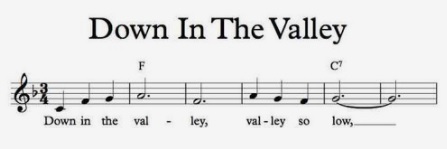
Related material: Dance of the Numbers (Log24, Dec. 15, 2005).
Comments Off on Escape from the Grid
Monday, August 16, 2021

Click for a webpage on McDonald.
See also . . .


Comments Off on At McDonald’s
“The great Confucius guided China spiritually for over 2,000 years.
The main doctrine is ' 仁 ' pronounced 'ren', meaning two people,
i.e., human relationship. Modern science has been highly competitive.
I think an injection of the human element will make our subject more
healthy and enjoyable."
— Geometer Shiing-Shen Chern in a Wikipedia article
See the "ren" character in Wiktionary. See as well . . .

"The development of ren ( 仁 ) in early Chinese philosophy,"
By Robin Elliott Curtis, U. of B.C. Master's thesis, 2016 —
Thus, we can conclude that several different forms of
the character ren , were in existence during the
Warring States period. This shows that etymological analyses
focusing exclusively on the combination of 人 and 二 are inadequate.
It should also serve as a warning against “character fetishization,”
or giving “exaggerated status to Chinese characters in the interpretation
of Chinese language, thought, and culture.” 46
46 Edward McDonald 2009, p. 1194.
McDonald, Edward. 2009. “Getting over the Walls of
Discourse: 'Character Fetishization' in Chinese Studies.”
The Journal of Asian Studies 68 (4): 1189 – 1213.
Wikipedia article on Ren in Confucianism:
人 + 二 = 仁 (Rén)
man on left two on right,
the relationship between two human beings,
means co-humanity. Originally the character
was just written as丨二 [citation needed]
representing yin yang,
the vertical line is yang
(bright, traditionally masculine, heaven, odd numbers),
the two horizontal lines are yin
(dark, traditionally feminine, earth, even numbers),
仁 is the core of everything.
|
"The core of everything" . . . Citation needed ?
Comments Off on In a Nutshell: The Core of Everything
The title is from "Federico Ardila on Math, Music and
the Space of Possibilities," a podcast from Steven Strogatz's
Quanta Magazine series. The transcript is dated March 29, 2021.
Ardila: … in a nutshell, what combinatorics is about is just
the study of possibilities and how do you organize them,
given that there’s too many of them to list them.
Strogatz: So, I love it. Combinatorics is not just
the art of the possible, but the enumeration of the possible,
the counting of the possible and the organizing of the possible.
Strogatz: It’s such a poetic image, actually: the space of possibilities.
This journal on the podcast date, March 29, 2021 —

A more precise approach to the space of possibilities:

Comments Off on The Space of Possibilities
Sunday, August 15, 2021
The following image (click to enlarge) is now the target of
a link on the phrase "similarly divided" in Friday's post
"The Divided Square."

Related material —

A version of the above Schroeder pages, dumbed down for
readers of The New Yorker —

Note that the proof under discussion has nothing to do with
the New Yorker 's rubric "Annals of Technology."
Note also the statement by Strogatz that
"Einstein’s proof reveals why the Pythagorean theorem
applies only to right triangles: they’re the only kind
made up of smaller copies of themselves."
Exercise: Discuss the truth or falsity of the Strogatz statement
after reviewing the webpage Triangles Are Square.
For approaches to geometry that are more advanced, see
this journal on the above New Yorker date — Nov. 19, 2015 —
Highlights of the Dirac-Mathieu Connection.
Comments Off on Simple Similarity
Saturday, August 14, 2021
The title refers to a Log24 post of Feb. 8, 2021.
Detail from an image in that post:

By groping toward the light we are made to realize
how deep the darkness is around us." — Arthur Koestler
Related Hollywood remark:
"You've blown communication
…as we've known it… right out of
the water. You know that, don't you?"
— Cliff Robertson in Brainstorm (1983)

Comments Off on North of Big Snake
Ave
A letter in The Mathematical Intelligencer , January 1988
http://www.log24.com/noindex-pdf/
Cullinane-letter-Artes_Liberales-Intelligencer.pdf —

Vale
A farewell lecture at Yale, April 2013

Kagan's obituary in the online New York Times tonight
says that he died at 89 on August 6, 2021.

The above farewell lecture of Kagan was on Thursday, April 25, 2013.
From this journal on Kagan's "born yesterday" date — April 24, 2013 —

"By groping toward the light we are made to realize
how deep the darkness is around us."
— Arthur Koestler, The Call Girls: A Tragi-Comedy ,
Random House, 1973, page 118
Comments Off on Ave Atque Vale
Friday, August 13, 2021
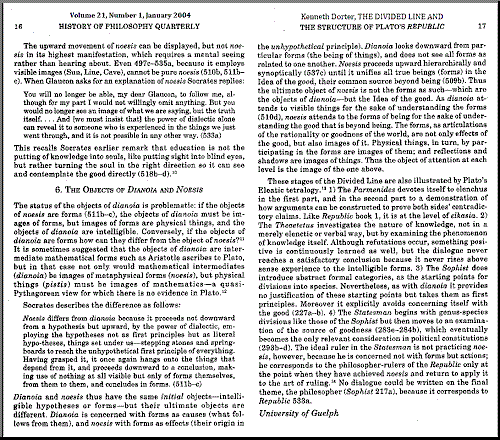
Compare and contrast —

Update of 2:25 PM ET on Friday, August 13th, 2021 —
Plato's alleged motto, "Let no one ignorant of geometry enter,"
seems to have been of little use to those attempting to make sense
of his "divided line" analogy in the Republic.
Some related geometry —
The Divided Square :

Three Similarly Divided Squares :
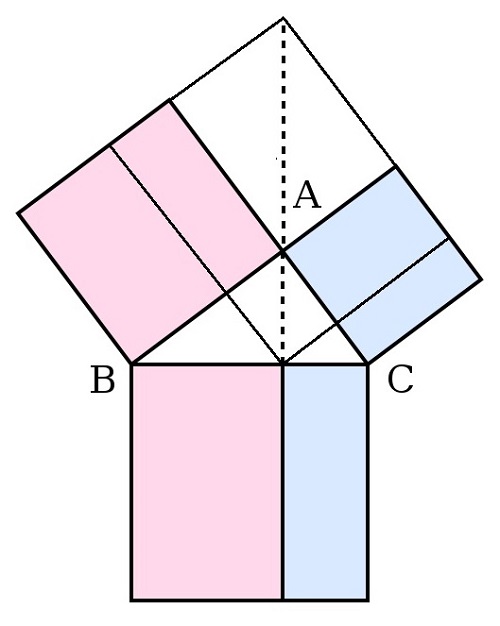

Scholium —

Comments Off on The Divided Square
Thursday, August 12, 2021
"One, two, three . . . but where is the fourth?" — Socrates

Update of 4:40 AM ET the next morning —

For students of metaphor —
"four major pillars
of the reality-based community" —

Update at 6:32 AM ET Friday the 13th — Cross-examination —

Comments Off on Unsocratic Method
|
Filed under: General, Geometry —
Tags: Plato in China, The Church in Philadelphia —
m759 @ 12:00 PM
Women's History Month continues…
Ontology Alignment
"He had with him a small red book of Mao's poems, and as he talked he squared it on the table, aligned it with the table edge first vertically and then horizontally. To understand who Michael Laski is you must have a feeling for that kind of compulsion."
— Joan Didion in the Saturday Evening Post,
Nov. 18, 1967 (reprinted in Slouching Towards Bethlehem)
"Or were you," I said.
He said nothing.
"Raised a Catholic," I said.
He aligned a square crystal paperweight with the edge of his desk blotter.
— Joan Didion in The Last Thing He Wanted, Knopf, 1996
"It was Plato who best expressed– who veritably embodied– the tension between the narrative arts and mathematics….
Plato clearly loved them both, both mathematics and poetry. But he approved of mathematics, and heartily, if conflictedly, disapproved of poetry. Engraved above the entrance to his Academy, the first European university, was the admonition: Oudeis ageometretos eiseto. Let none ignorant of geometry enter. This is an expression of high approval indeed, and the symbolism could not have been more perfect, since mathematics was, for Plato, the very gateway for all future knowledge. Mathematics ushers one into the realm of abstraction and universality, grasped only through pure reason. Mathematics is the threshold we cross to pass into the ideal, the truly real."
— Rebecca Goldstein,
Mathematics and the Character of Tragedy
|
Comments Off on A Square Crystal Paperweight
Wednesday, August 11, 2021
For Stephen King and the Club Dumas —

Related perceptive remarks by Juliane Ungänz —

Zweig was the author of Schachnovelle .
Comments Off on Expanding the Ulysses Spielraum
From the previous post . . .
"This review was filed from the 2020 Sundance Film Festival
on January 30th."
Meanwhile . . .

Click the above image for posts on "Expanding the Spielraum."
See as well . . .

Comments Off on Synchronology Check
A well in the opening scenes of the 2020 film version of Joan Didion's
1996 novel The Last Thing He Wanted —


From a link in the previous post —
Sorvino in “The Last Templar”
at the Church of the Lost Well:

Consider the source.
Comments Off on Pause and Rewind
An online New York Times obituary today
of a scholar who reportedly died on August 1 —
"In a career that took him to Hong Kong and Taiwan,
as well as a succession of Ivy League universities,
Professor Yu often returned to the theme that China’s
long traditions could be a wellspring, not an enemy,
of enlightenment, individual dignity and democracy."
— Chris Buckley
Cf. Hexagram 48 in this journal and some synonyms:

Comments Off on Wellspring
Tuesday, August 10, 2021
The structure in the previous post (three trios), though historically significant,
offers less opportunity for contrapuntal variation than . . .

Related remarks for Pleasantly Discursive Day —

Comments Off on Discursive
|
Margaret Atwood on Lewis Hyde's
Trickster Makes This World: Mischief, Myth, and Art—
"Trickster is among other things the gatekeeper who opens the door into the next world; those who mistake him for a psychopath never even know such a door exists." (159)
What is "the next world"? It might be the Underworld….
The pleasures of fabulation, the charming and playful lie– this line of thought leads Hyde to the last link in his subtitle, the connection of the trickster to art. Hyde reminds us that the wall between the artist and that American favourite son, the con-artist, can be a thin one indeed; that craft and crafty rub shoulders; and that the words artifice, artifact, articulation and art all come from the same ancient root, a word meaning "to join," "to fit," and "to make." (254) If it’s a seamless whole you want, pray to Apollo, who sets the limits within which such a work can exist. Tricksters, however, stand where the door swings open on its hinges and the horizon expands: they operate where things are joined together, and thus can also come apart.
|
"As a Chinese jar . . . ."
— Four Quartets
|
Rosalind Krauss
in "Grids," 1979:
"If we open any tract– Plastic Art and Pure Plastic Art or The Non-Objective World , for instance– we will find that Mondrian and Malevich are not discussing canvas or pigment or graphite or any other form of matter. They are talking about Being or Mind or Spirit. From their point of view, the grid is a staircase to the Universal, and they are not interested in what happens below in the Concrete.
Or, to take a more up-to-date example…."
"He was looking at the nine engravings and at the circle,
checking strange correspondences between them."
– The Club Dumas , 1993
"And it's whispered that soon if we all call the tune
Then the piper will lead us to reason."
– Robert Plant, 1971
The nine engravings of The Club Dumas
(filmed as "The Ninth Gate") are perhaps more
an example of the concrete than of the universal.
An example of the universal— or, according to Krauss,
a "staircase" to the universal— is the ninefold square:

"This is the garden of Apollo,
the field of Reason…."
– John Outram, architect
|
The "Katz" of the August 7 post Art Angles
is a product of Princeton's
Department of Art and Archaeology.
ART —
.jpg)
ARCHAEOLOGY —
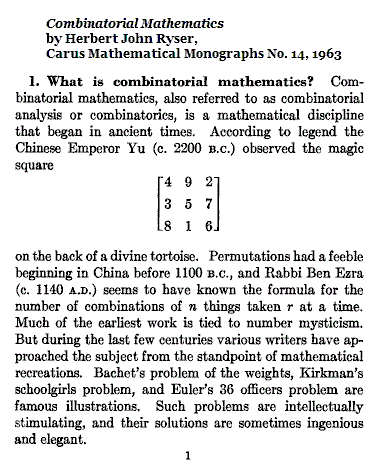

"This pattern is a square divided into nine equal parts.
It has been called the 'Holy Field' division and
was used throughout Chinese history for many
different purposes, most of which were connected
with things religious, political, or philosophical."
– The Magic Square: Cities in Ancient China,
by Alfred Schinz, Edition Axel Menges, 1996, p. 71
Comments Off on Ex Fano Apollinis
Monday, August 9, 2021
Bryan Marquard in The Boston Globe yesterday
on a professor who died on 7 July, 2021 —
" A Harvard Medical School professor emeritus in psychiatry,
Dr. Hobson told the Globe in 2011 that he didn’t 'feel bad about
taking on Sigmund Freud. I think Sigmund Freud has become
politically correct. Psychoanalysis has become the bible, and
I think that’s crazy.'
He also forcefully set aside the theories of Carl Jung, the Swiss
psychiatrist who analyzed dreams and saw them as important
messages sent from the psyche.
'If you’re a pure scientist, Jung is just deadly,' Dr. Hobson said
in [a] 2005 interview. 'The collective unconscious, the anima …
these are literary constructs. You can’t do any science on that
kind of stuff.' ”
See as well this journal on 7 July 2021 —

Comments Off on Harvard Elegy

"Nice work if you can get it." — Classic song lyric

Photo credit: Peter Lindbergh
See also . . . Sunset Boulevard Revisited and . . .

“Do not block intersection.” — City of Los Angeles
Comments Off on Art Criticism for the Chateau Marmont

"Two years ago . . . ." — Synopsis of the August 3 film "Hum"
Two years ago on August 3 . . .

What is going on in this picture?
The above is an image from
the August 3, 2019,
post "Butterfield's Eight."
"Within the week . . . ."
— The above synopsis of "Hum"
This suggests a review of a post
from August 5, 2019, that might
be retitled . . .
"The void she knows,
the tune she hums."

Comments Off on The Tune (Suggested by “Hum: Seek the Void”)
Sunday, August 8, 2021
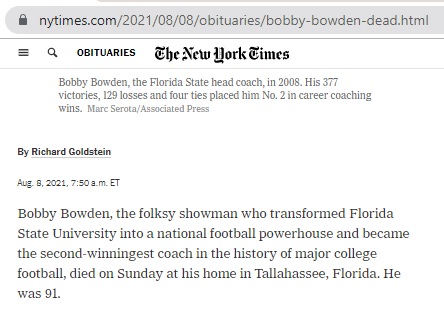
"Bowden applied what he viewed as the lessons of the battlefield
to the football field. While bedridden with rheumatic fever at age 13,
he had listened to radio broadcasts telling of World War II battles,
and he later studied the campaigns of Patton, MacArthur and
Germany’s Erwin Rommel.
'They all demonstrate discipline,' Bowden once said, 'and that you
need reserves so that if you’re getting annihilated on one front, you
can attack somewhere else.' ” — Richard Goldstein
Amen.
See as well "Geometry Battlefield" in this morning's previous post.
Comments Off on Requiem for a Showman
Remarks by Roberta Smith in the print version of The New York Times
on Friday, August 6, suggest a review . . .
Smith's remarks concerned a show that first opened in 2019
at the Los Angeles Museum of Contemporary Art (MOCA).
A MOCA-related post in this journal —

The Nachtmantel above is a painting by Jörg Immendorff,
who reportedly died at 61 in 2007 —

A less provocative theme from Log24 on the date of Immendorff's death:
"The form, the pattern" — T. S. Eliot
Comments Off on Themes
Saturday, August 7, 2021

And then there is Bardo College . . .

"Katz approaches her subject from every angle,
its relationship to feminism, multiculturalism and
the counterculture, as well as its (now questionable)
cultural appropriation and even its underlying debt
to Minimalism (the use of repetition and the grid)."
This is from a Roberta Smith piece yesterday morning
in The New York Times print version:
"A version of this article appears in print on Aug. 6, 2021,
Section C, Page 6 of the New York edition with the headline:
Celebrating a Riotous Decor That Keeps Eyes Moving."
Well, perhaps not every angle.
Comments Off on Art Angles
Friday, August 6, 2021
Comments Off on Strong Curtain
Thursday, August 5, 2021
A play by George Bernard Shaw is the source of the book title at
the end of the previous post — "Music is the brandy of the damned ."
This suggests a corresponding song title . . .

From the album "The Time of the Assassins."
The above image is not of the singer's own background.
Comments Off on Music for Bobos

"How old is the 'Big Spider Beck' joke?"

From "Blackboard Jungle" (1955) —
Teacher:
– You see, music is based on mathematics,
and it's just that the next class …
is a little more advanced.
Students:
– We're advanced, teach.
– Two times two is four.
– Are four.
See also Damnation Morning in this journal and . . .

Comments Off on The Dumbing-Down
Wednesday, August 4, 2021
Comments Off on The Pink Lotus
In memory of a former St. Bonaventure student —

A sequel to . . .

Comments Off on The Mondegreen Correction: “That’s on the green, my dear.”
Comments Off on The Cross of Lady Mondegreen
Comments Off on “They’re gonna put me in the movies…” — Johnny Russell


"You're gonna need an ocean/
of calamine lotion" — "Poison Ivy"
Comments Off on Bobos in Paradise Reconsidered
"One, two, three . . . but where is the fourth?"
— Socrates

Click for Daimon Theory posts.
* Fishman, an abstract expressionist painter,
reportedly died in Manhattan at 82 on July 26.
Comments Off on In Memory of Louise Fishman*



My own lucubrations from April 12, 2012 include . . .

From the target of the above link —

"Here's to efficient packing."
Comments Off on “Old men ought to be explorers” — T. S. Eliot
Tuesday, August 3, 2021

See also July 27 in this journal.
Other religious remarks:

Comments Off on Card
(Continued from Math Rights, July 25.)

For Bob Moses, see the July 25 post Math Rights.
For Math in the Media, see the remarks below.

For another perspective on rings, see Square Space.
Comments Off on The Algebra Project

A scene for Nietzsche's Sils Maria —

A midrash for Freud, from Kate Beckinsale tonight —

Risin' Up to the Challenge of Her Rival
Comments Off on Class
An older generation's Rimmer —

The torch is passed to a new generation —

Then there is the X of Paul Fussell —
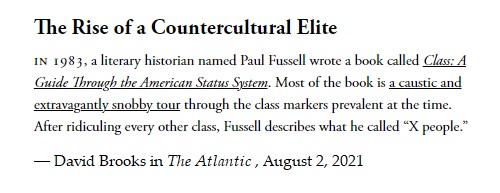
Mature adults only —
For a more realistic (and straight ) X-scene, search for
ph5dadfa97d2cc1 . (See esp. the 10 seconds starting at 07:04).
Comments Off on Pacific Rimming: The Joy of X
Monday, August 2, 2021

For Darkinbad the Brightdayler
Comments Off on The Dinner Party
http://www.wallacestevens.com/concordance/
savage
Your query matched 15 lines
An Ordinary Evening in New Haven (iv)
Stanza: 61; Line Number: 7
They only know a savage assuagement cries
Stanza: 62; Line Number: 8
With a savage voice; and in that cry they hear
Stanza: 64; Line Number: 10
In a savage and subtle and simple harmony,
Credences of Summer (vii)
Stanza: 101; Line Number: 11
The object, grips it in savage scrutiny,
Examination of the Hero in a Time of War (ii)
Stanza: 26; Line Number: 12
And rainbow sortilege, the savage weapon
Exposition of the Contents of a Cab (OP)
Line Number: 12
And savage blooms;
From the Journal of Crispin (II) (OP)
Stanza: 114; Line Number: 20
Into a savage color he goes on.
Gubbinal
Line Number: 9
That savage of fire,
Less and Less Human, O Savage Spirit
Title
Less and Less Human, O Savage Spirit
Page from a Tale
Line Number: 20
They looked back at Hans’ look with savage faces.
Sunday Morning (vii)
Stanza: 95; Line Number: 5
Naked among them, like a savage source.
The Comedian as the Letter C, ii: Concerning the Thunderstorms of Yucatan
Stanza: 14; Line Number: 14
Into a savage color he went on.
The Man with the Blue Guitar (iii)
Stanza: 29; Line Number: 9
To bang it from a savage blue,
The Pediment of Appearance
Line Number: 10
The savage transparence. They go crying
The World as Meditation
Line Number: 6
Whose mere savage presence awakens the world in which she dwells.
_________________________________________________________________________
Online Concordance to Wallace Stevens’s Poetry
Comments Off on Savage Stevens
Sunday, August 1, 2021

See also Big Time in this journal.
Comments Off on Blackboard Jungle Cruise
The title refers to a record played during math class
in the 1955 film "Blackboard Jungle."
Related posts: Bix and Mira. See as well . . .

Comments Off on The Jazz Me Blues
"Savage ('wild,' 'undomesticated') modes of thought are primary
in human mentality. They are what we all have in common."
— "The Cerebral Savage: On the Work of Claude Lévi-Strauss,"
by Clifford Geertz (Encounter, vol. 28 no. 4, April 1967, pp. 25-32)
For more Geertz and some related art, see The Kaleidoscope Puzzle,
which lets you picture twin sixteens .
"Can you imagine the mathematical possibilities?"
— Line from "Annie Hall" (1977)
Comments Off on The Savage Sixteens

From a search in this journal for Ronna.
"It’ll drive you crazy or make you sane
Moment by moment
It’s a brand new game
The more I learn
The less I understand about love"
— Ronna Reeves, 1992
Comments Off on Devil’s Arithmetic: 26+26=52
"Can you imagine the mathematical possibilities?"
— Line from "Annie Hall"
Related joke —

The Catherine Hardwicke version —

More fun . . . A 26-year old Cara Delevingne.
Comments Off on Old Joke

Click for the source.
Comments Off on Consider the Source.
Hans Freudenthal in 1962 on the axiomatic approach to geometry
of Fano and Hilbert —
"The bond with reality is cut."

Some philosophical background —

For Weyl's "few isolated relational concepts," see (for instance)
Projective Geometries over Finite Fields , by
J. W. P. Hirschfeld (first published by Oxford University Press in 1979).
Weyl in 1932 —
|
Mathematics is the science of the infinite , its goal the symbolic comprehension of the infinite with human, that is finite, means. It is the great achievement of the Greeks to have made the contrast between the finite and the infinite fruitful for the cognition of reality. The intuitive feeling for, the quiet unquestioning acceptance of the infinite, is peculiar to the Orient; but it remains merely an abstract consciousness, which is indifferent to the concrete manifold of reality and leaves it unformed, unpenetrated. Coming from the Orient, the religious intuition of the infinite, the apeiron , takes hold of the Greek soul in the Dionysiac-Orphic epoch which precedes the Persian wars. Also in this respect the Persian wars mark the separation of the Occident from the Orient. This tension between the finite and the infinite and its conciliation now become the driving motive of Greek investigation; but every synthesis, when it has hardly been accomplished, causes the old contrast to break through anew and in a deepened sense. In this way it determines the history of theoretical cognition to our day.
— "The Open World: Three Lectures on the Metaphysical Implications of Science," 1932
|
Comments Off on Freudenthal vs. Weyl
Saturday, July 31, 2021
In memory of a Harvard professor who reportedly died on
St. Peter's Day, 2021 (June 29).
"You may be flying through the air
Wrapped up in how high you can go
And no one will be there to bring you down
Just stop — take a look around"
— Patti LaBelle, "Space Children"
(No. 204 on Cara Delevingne's Wall of Sound)
* See also St. Peter's College in "His Dark Materials."
Comments Off on For St. Peter’s College (University of Oxford)*
The "eschaton" phrase above is from the works of Robert Anton Wilson.
That Robert A. Wilson should not be confused with
the Robert A. Wilson who is a GL(2,3) enthusiast.
Nor should immanentizing be confused with coordinatizing . . .
"Coordinatizing the Deathly Hallows" —

Related geometric remarks — Hashtag as Well —

Comments Off on The Hashtag, or: “Immanentizing the Eschaton”

* A phrase from Disney in a July 30 film:

See as well other examples of form, and of "Page 194," in this journal.
Comments Off on Strong Form*
Friday, July 30, 2021
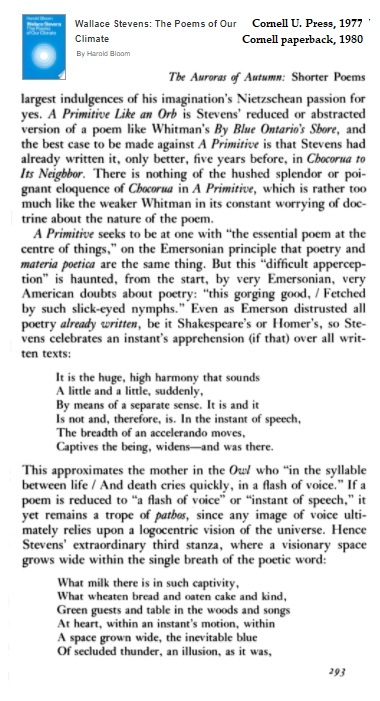
See too "Page 293" in this journal.
Comments Off on Logocentrism and the Syllable Between

Cover illustration:
Spies returning from the land of
Canaan with a cluster of grapes.


Comments Off on Central Objects
This journal on May 27, 2021 —
Downstream:

Upriver:



"There grows a tree in Paradise
And the pilgrims call it the Tree of Life"
Comments Off on Downstream vs. Upriver

The "secret, subterranean river" of Shulevitz is
a flow of thought favorable to the cause of feminism,
but not necessarily to other "revolutionary" ideas.
Compare and contrast:
"Where Alph, the sacred river, ran"
— Coleridge, Kubla Khan
"Where Aleph the sacred symbol ran"
— Cullinane, "The Coxeter Aleph"
For group discussion:
How (if at all) is the "finitude" of Heidegger related to
mathematical finitude and The King of Infinite Space ?
Comments Off on The Secret Subterranean River
Thursday, July 29, 2021



* Reference to a 1946 Mark Stevens film.
Comments Off on Castling, or: A Dark Corner* for Cara

See as well, from yesterday's "Red Dot in a Sacred Timeline" —


Comments Off on But Seriously, Bergen . . .

"Go away — I'm asleep."
— Epitaph of the late Joan Hackett.
Hackett is at top center
in the poster below.

Comments Off on Catchphrases from the City of Angels
Wednesday, July 28, 2021
“… Which makes it a gilt-edged priority that one of us
gets into that Krell lab and takes that brain boost.”
— American adaptation of Shakespeare’s Tempest , 1956
Comments Off on From the Krell Lab


See the Log24 post Art Direction of July 23, 2021.
Comments Off on Red Dot in a Sacred Timeline
Tuesday, July 27, 2021
The two previous posts suggest a review.
Comments Off on Heaven, Hell, and Hollywood

And then there is the perspective of the above date — May 22, 2017 —
in this journal:
". . . and just as God defeats the devil . . . ."
— André Weil to his sister.
Accompanied by Elton John music?

Comments Off on The Thirteenth Perspective

Instagram screenshot with added note.
Easy E for an Accountant:


Not So Easy: E-Operators
"A great many other properties of E-operators
have been found, which I have not space
to examine in detail."
— Sir Arthur Eddington, New Pathways in Science ,
Cambridge University Press, 1935, page 271.
(This book also presents Eddington's unfortunate
speculations on the fine-structure constant.)
Update of 4:04 AM ET:
Here is the not-so-tiny-dancer in
the above Instagram screenshot.
Comments Off on Dancing in the Moonlight
Monday, July 26, 2021

"Like a child in wild anticipation . . ." — Song lyric
Comments Off on Happy Birthday, Carl Jung
Comments Off on Clocking Out
Comments Off on Q is for Quizlet
Sunday, July 25, 2021


"The Algebra Project was born.
The project was a five-step philosophy of teaching
that can be applied to any concept, he wrote,
including physical experience, pictorial representation,
people talk (explain it in your own words), feature talk
(put it into proper English) and symbolic representation."
— The New York Times today
"He wrote" —
See pages 120-122 in . . .

Comments Off on Math Rights
In memory of Ed Wood:
"Such a brilliant director, a fucking powerhouse…."
— Recent Instagram comment
"Twilight was theatrically released on November 21, 2008;
it grossed over US$393 million worldwide. It was released
on DVD March 21, 2009 and became the most purchased
DVD of the year." — Wikipedia
See also November 21, 2008, in posts tagged Olaf Gate.
Related material —

As inquisitions go, I prefer the Holy Office of Philip Pullman.
Before thir eyes in sudden view appear
The secrets of the hoarie deep, a dark
Illimitable Ocean without bound,
Without dimension, where length, breadth, and highth,
And time and place are lost; where eldest Night
And Chaos, Ancestors of Nature, hold
Eternal Anarchie, amidst the noise
Of endless warrs and by confusion stand.
For hot, cold, moist, and dry, four Champions fierce
Strive here for Maistrie, and to Battel bring amidst the noise
Thir embryon Atoms....
... Into this wilde Abyss,
The Womb of nature and perhaps her Grave,
Of neither Sea, nor Shore, nor Air, nor Fire,
But all these in thir pregnant causes mixt
Confus'dly, and which thus must ever fight,
Unless th' Almighty Maker them ordain
His dark materials to create more Worlds,
Into this wilde Abyss the warie fiend
Stood on the brink of Hell and look'd a while,
Pondering his Voyage....
-- John Milton, Paradise Lost , Book II
Comments Off on Together Again… At Twilight Time
Comments Off on Department of Corrections
Saturday, July 24, 2021
Comments Off on Mason’s Box
Comments Off on For Miss Minutes
Comments Off on Physics News
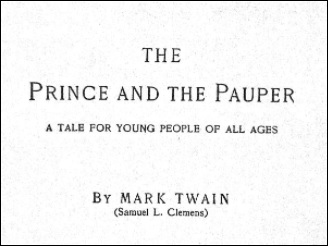


“Suck any sense from that who can” — Gerard Manley Hopkins
Related architecture:

From posts tagged Marfa Day —
"Den Kopf benützen ist besser als ihn verlieren."
Comments Off on Architectural Digest: “You have a text?”
Friday, July 23, 2021

Cover illustration:
Spies returning from the land of
Canaan with a cluster of grapes.
Colored woodcut from
Biblia Sacra Germanica ,
Nuremberg, Anton Koberger, 1483.
Victoria and Albert Museum, London.


Comments Off on Art Direction
Thursday, July 22, 2021
https://navy.togetherweserved.com/usn/
servlet/tws.webapp.WebApp?
cmd=ShadowBoxProfile&type=EventExt&ID=228739
|
MICHENER: Returning in the dark from a routine mission my pilot kept missing the poorly lit New Caledonia air strip. We braced for a crash landing, just made it, and were badly shaken. If I had died, I would have left nothing behind. I was approaching 40, mind you. That near crash prompted me to draft South Pacific stories running through my mind.
QUESTIONER: Your first draft was written on the island of Espiritu Santo, New Hebrides, south of Guadalcanal, in a Quonset hut, by pecking at a typewriter with your two index fingers. What was the story line?
MICHENER: Tales of the South Pacific consisted of 18 loosely connected stories about the comedy, boredom, shenanigans of Navy life on a Pacific island between military battles. The stories showed the interplay of Navy men, Navy nurses, and conniving natives; the funny aspects of military planes, jeeps, bulldozers, canned goods imposed on simple people living on beautiful islands.
|
Comedy and Boredom —

Shenanigans —


Comments Off on Shadow Box Profile: Location, Location, Location
The author of remarks on Frisette in the previous post —

Other South Pacific material —

"If you try, you'll find me
Where the sky meets the sea."
— Song lyic inspired by James Michener,
quoted here yesterday afternoon
"Into eternity" — James Joyce
Tréguer Today —

Comments Off on Special Island
(Suggested by a recent Instagram post.)

|
https://wordhistories.net/2017/07/10/
box-and-cox-origin/ —
Box and Cox is largely based on Frisette , a one-act vaudeville by the French playwrights Eugène Labiche (1815-88) and Auguste Lefranc (1814-78), first staged at the Théâtre du Palais-Royal, Paris, on Tuesday 28th April 1846. In this play, Madame Ménachet, the housekeeper, rents out, without their knowledge, the same room to Gabriel Gaudrion, a baker’s assistant, who uses it during the day, and to Frisette, a lace-maker, who uses it during the night. . . . .
— Pascal Tréguer
|
A scene from Frisette —

Comments Off on History of Drama 101: The Farce
Wednesday, July 21, 2021

"If you try, you'll find me
Where the sky meets the sea."
— Song lyic inspired by James Michener
I prefer Gary Cooper in Return to Paradise .
Comments Off on “Here am I, your special lockscreen” — Adapted show tune
Comments Off on Speak, Memory
Who can pick up the weight of Britain,
Who can move the German load
Or say to the French here is France again?
Imago. Imago. Imago.
— Wallace Stevens


Lunchtime update —

Real quiche for Wallace Stevens ( i.e., an imaginary man )—

Comments Off on Imago, Imago, Imago

The above ball date — April 14, 2018 — suggests a review
of Log24 posts from that date that are now tagged
The Jerusalem Transformation .
Comments Off on The Date: Saturday Night in Beverly Hills
The title refers to a recent Ariana Grande video.
Academics may prefer . . .

For a purely mathematical approach to switching the positions see . . .
 .
.
For related philosophical remarks, see "Arrowy, Still Strings."
Comments Off on Switchin’ the Positions (Revised Standard Version)
Tuesday, July 20, 2021
This afternoon's online New York Times reports a July 9
death at a memory-care facility —
Requiem for a Wechsler —
"Lighting for the Met is particularly challenging because —
unlike on Broadway, for instance — the shows change
on a weekly or even daily basis. One of Mr. Wechsler’s
accomplishments, Mr. Sardo said, was to develop
accurate records of the lighting schemes for each production,
so that one show could be swapped for another more efficiently.
“Before Gil was involved, there were no reference manuals as to
how that should be done,” Mr. Sardo said.
“Someone kinda remembered how the lighting was supposed to be.”
— Neil Genzlinger
Comments Off on “Kinda Remember the Kind of September . . .”
Also from Terebess —
|
https://terebess.hu/zen/mesterek/dtsuzuki.html —
From Larry A. Fader, “D. T. Suzuki's Contribution to the West,”
in A Zen Life: D. T. Suzuki Remembered , ed. by Masao Abe,
John Weatherhill, Inc., 1986, pp. 95–108 —
In contrast to Jung's approach is the humanistic psychology of Erich Fromm. Fromm was also influenced by Suzuki, but in different ways. Whereas Jung dealt with Zen Buddhism as an aspect of his psychological thought, Suzuki's influence touches closer to the core of Fromm's thought. Fromm organized an influential workshop on Zen Buddhism and psychoanalysis in Cuernavaca, Mexico, and incorporated many concepts which resemble Suzuki's interpretation of Zen into his psychoanalytic writings.
The Cuernavaca workshop of 1957, held at Fromm's Mexico home, brought together eminent psychologists expressly for the purpose of exploring Zen Buddhism and psychoanalysis. As such, it marks an important point of contact between thinkers in the field of psychology and D. T. Suzuki's interpretation of Zen. Suzuki addressed the gathering, and his speeches were later published as “Lectures in Zen Buddhism” together with Fromm's address entitled “Psychoanalysis and Zen Buddhism” and that of Richard DeMartino entitled “The Human Situation and Zen Buddhism,” in a volume which Fromm edited and called Zen Buddhism and Psychoanalysis.
Fromm organized the Mexico meeting and issued the invitations to its participants as a result of his feeling that psychotherapists—and in particular, psychoanalysts—were at that time “not just interested, but deeply concerned” with Zen. This “concern,” Fromm believed, was a new and potentially important development in the attitude of psychologists. His own address to the workshop, reformulated, as he says, because of “the stimulation of the conference,” includes language and ideas that may be traced to Dr. Suzuki's Cuernavaca lectures.
|
See as well Fromm and Frère Jacques, Cuernavaca in this journal.
Comments Off on Zen in Cuernavaca
Monday, July 19, 2021
A post from January 21, 2003, now also tagged Big Sur,
suggested a search for the source of that post's
Shih Te poem. The result of the search —


Related Fredonia material, from posts tagged Church and Temple —

Update, from six minutes later, on related entertainment —

Update of 12:38 PM ET on the next day — July 20, 2021 —
**********************************************************************
Crystal Poem by Shide (Shih Te, etc.)
at https://terebess.hu/zen/chang/shide.html
from "Comparative List of Shide's Poems" —
Traditional Chinese:
無去無來本湛然,
不居內外及中間。
一顆水精絕瑕翳,
光明透滿出人天。
Simplified Chinese:
无去无来本湛然,
不居内外及中间。
一颗水精绝瑕翳,
光明透满出人天。
Romanization:
wú qù wú lái běn zhàn rán ,
bù jū nèi wài jí zhōng jiān 。
yī kē shuǐ jīng jué xiá yì ,
guāng míng tòu mǎn chū rén tiān 。
English Translation by Paul Rouzer:
No goings, no comings, originally tranquil;
No dwelling within or without, or at the point between.
A single crystal of purity without flaw or crack;
Its light penetrates and fills up the worlds of men and gods.
English Translation by Red Pine:
Not waxing or waning essentially still
not inside or outside and nowhere between
a single flawless crystal
whose light shines through to gods and men
*******************************************************************
Comments Off on Seeking the Source
"Of making many books there is no end." — Ecclesiastes 12:12
That's true as well of counting .

Comments Off on Counter Culture
Or: Dreaming of Dinner-Party-Gate
|
An Ordinary Evening in New Haven, XXII
Professor Eucalyptus said, “The search
For reality is as momentous as
The search for god.” It is the philosopher’s search
For an interior made exterior
And the poet’s search for the same exterior made
Interior: breathless things broodingly abreath
With the Inhalations of original cold
And of original earliness. Yet the sense
Of cold and earliness is a daily sense,
Not the predicate of bright origin.
Creation is not renewed by images
Of lone wanderers. To re-create, to use
The cold and earliness and bright origin
Is to search. Likewise to say of the evening star,
The most ancient light in the most ancient sky,
That it is wholly an inner light, that it shines
From the sleepy bosom of the real, re-creates,
Searches a possible for its possibleness.
— Wallace Stevens
|
For those who prefer not-so-sleepy bosoms, here are two
interior/exterior design notes suggested by the previous post —
Interior:

Exterior:

Comments Off on Interior/Exterior . . .
Sunday, July 18, 2021
"Something Wonderful " — Show Tune


The Infinity Bra!
Comments Off on Fashion Note
An advertisement in the online New York Times this evening:

The black rectangle refers to a floor mat —
 .
.
Comments Off on Accessories





"… you say goodbye I say hello" — Song lyric
Comments Off on The Glorification of Kitty
Saturday, July 17, 2021
From Ulysses , by James Joyce —
|
Strong curtain. He found in the world without as actual what was in his world within as possible. Maeterlinck says: If Socrates leave his house today he will find the sage seated on his doorstep, If Judas go forth tonight it is to Judas his steps will tend . Every life is many days, day after day. We walk through ourselves, meeting robbers, ghosts, giants, old men, young men, wives, widows, brothers-in-love. But always meeting ourselves. The playwright who wrote the folio of this world and wrote it badly (He gave us light first and the sun two days later), the lord of things as they are whom the most Roman of catholics call dio boia , hangman god, is doubtless all in all in all of us….
|
Comments Off on For Dio Boia
Friday, July 16, 2021
Comments Off on “To enlarge this contemplation…” — Sir Thomas Browne
The title is from Sir Thomas Browne:
"To enlarge this contemplation unto all the mysteries and secrets,
accomodable unto this number, were inexcusable Pythagorisme,
yet cannot omit the ancient conceit of five surnamed the number
of justice; as justly dividing between the digits, and hanging in
the centre of Nine . . . ."
"Separately." — Ben Franklin


Comments Off on Mystical Mathematicks
Thursday, July 15, 2021
"To demonstrate standing, a claimant must first show
he has incurred concrete, particularized and actual
or imminent injury; that the injury can be fairly traced
back to what is being challenged in court and that
the remedy sought can redress the issue."
— https://yaledailynews.com/
blog/2018/02/27/law-clinic-pushes-for-
fisa-court-transparency/
The above Yale date suggests a review of . . .
Raiders of the Lost Images . . .
which in turn suggests a review of Square Space.
Soundtrack (condensed) —
 .
.
Comments Off on Legal Standing
Comments Off on Vacuous Aspirations
Comments Off on Dramarama Continues . . .
Wednesday, July 14, 2021
Comments Off on Arch News Now


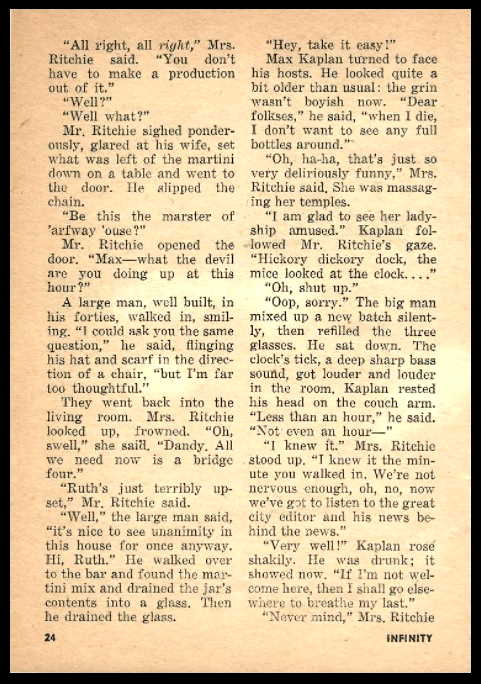
(Short story by Charles Beaumont, "Traumerei" (Feb. 1956).)
Comments Off on Risin’ Up to the Challenge of Our Rival
From Twilight Zone , Season 1, Episode 9, "Perchance to Dream " . . .
HALL: And you don't believe it's possible to dream in episodes?
RATHMANN: I don't say it's impossible.

Other entertainment that is more up to date:

Destiny . . .
"Maybe one night driving over Laurel Canyon
I'd look up in the rearview mirror, and I'd see
somebody or something coming up out of the darkness.
I had to drive the Canyon twice a day. It's a rough road.
One slip and you're over the edge."
— Actor Richard Conte in "Perchance to Dream " (1959)
For more on Laurel Canyon and the number 47
(the length in minutes of the above Loki finale),
see The Beckinsale Letter.
As for "Shadow Play " . . . See last night's The Intimate Monad.
Comments Off on Dreaming in Episodes
Tuesday, July 13, 2021


Perchance to dream.
Comments Off on The Intimate Monad

At the still point… from the film "Absolute Power" :

Photo credit – Graham Kuhn
I’ve heard of affairs that are strictly plutonic,
But diamonds are a girl’s best friend!
— Marilyn Monroe, modeling a Freudian slip
Comments Off on Last Tango in Cambridge

A search in this journal for the above book leads to . . .
https://web.archive.org/web/20020805024835/
http://directory.google.com:80/Top/Science/Math/Algebra/Group_Theory/ .
and its link to . . .
https://web.archive.org/web/20020408031913/
http://m759.freeservers.com/coord.html —
That page, "…20020408…," is a webpage, "Binary Coordinate Systems,"
archived on April 8, 2002.
For a sequel of sorts introducing Ternary Coordinate Systems ,
see yesterday's post Educational Series.
For a related philosophical remark, see Slow Art (June 15, 2015).
Comments Off on Binary, the Sequel . . . Ternary!
See Ninety-Three* in this journal.
See also a sequel that might have been titled Ninety-Four —
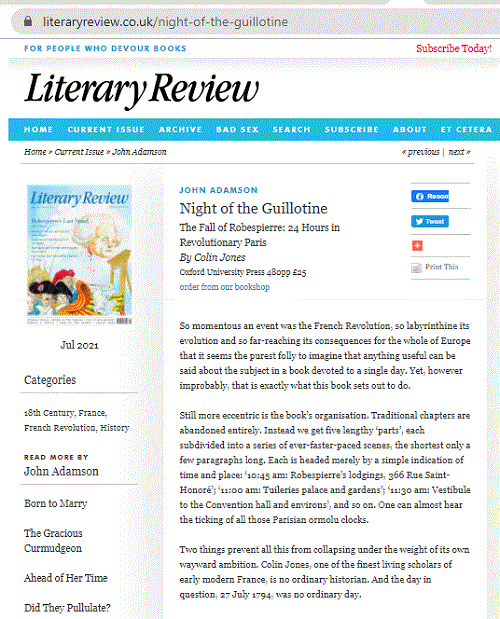
* A novel by Victor Hugo about the year 1793 and the French Revolution.
Comments Off on The Sequel
Monday, July 12, 2021
From my RSS feed today —

A related image from this journal on the date of Kaufman's death —

* The quantization discussed by Woit is a technical term from
theoretical physics. It is not related to more naive notions of
"building blocks," a phrase greatly overused by science writers.
See Log24 posts tagged The Building-Block Metaphor.
Comments Off on Development Hell: Pattern, Decoration, and Quantization*
(Continued from St. Luke's Day, 2014)
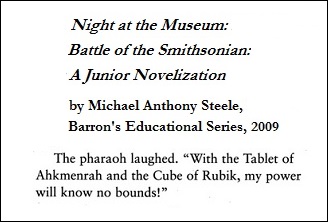
Tablet:
.jpg)
Cube:

Comments Off on Educational Series
Sunday, July 11, 2021

See Wang Wei: Journey to the Source of the Peach Blossom River .
Related Hollywood remark:
"You've blown communication
…as we've known it… right out of
the water. You know that, don't you?"
— Cliff Robertson in Brainstorm (1983)

Comments Off on Night at the Museum: After Yang
« Newer Posts —
Older Posts »



































































.jpg)


























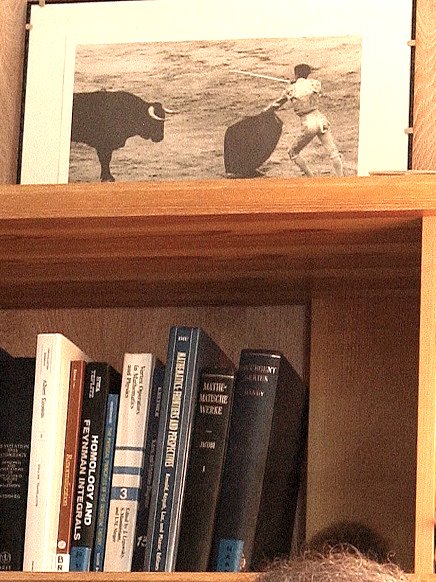































































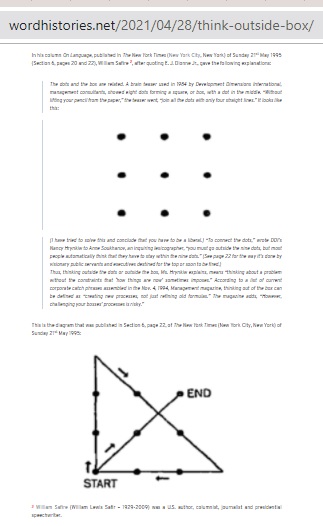

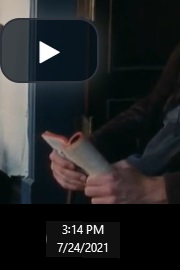


































 .
.














